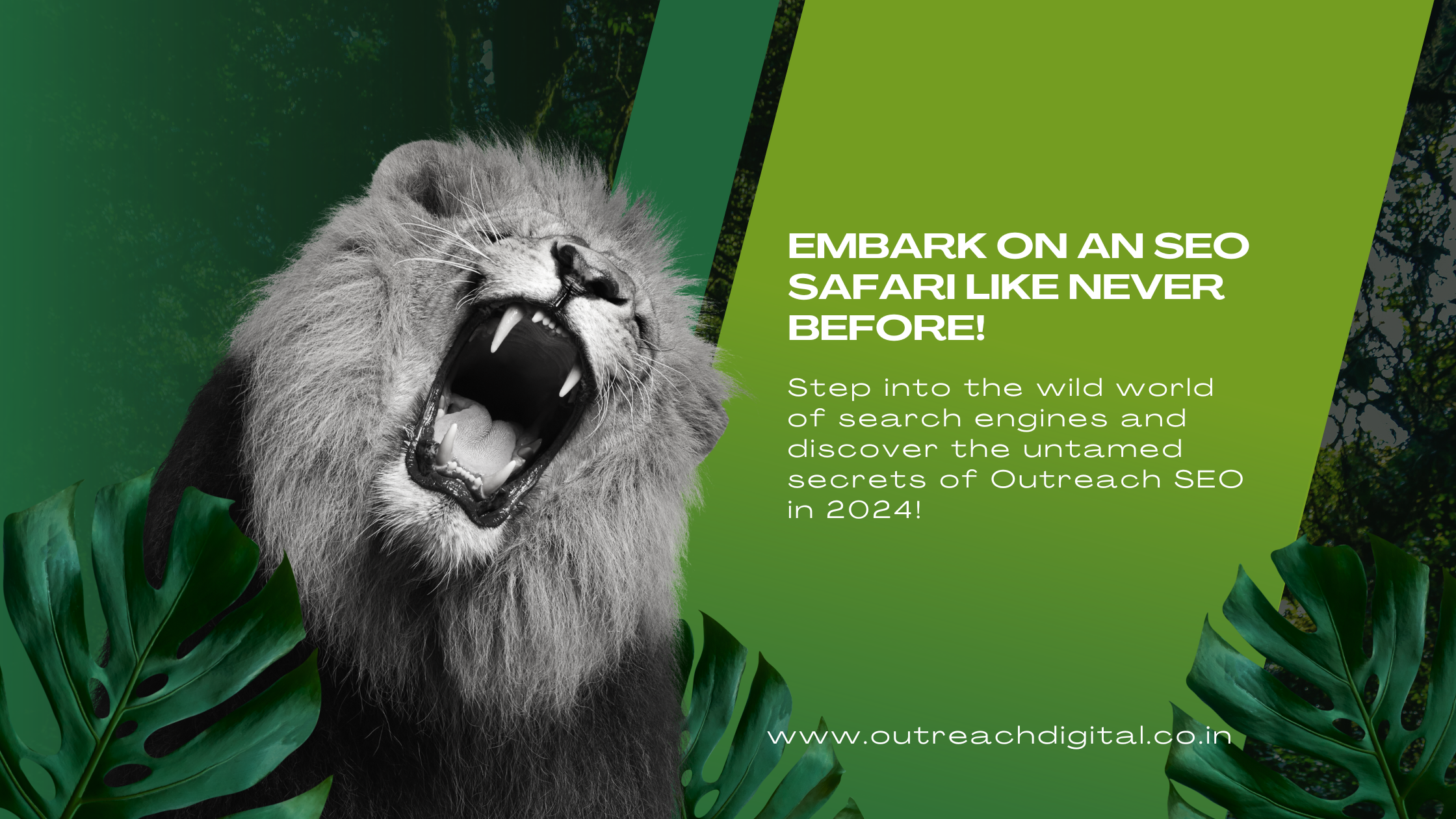In a landscape where the conventional boundaries of Search Engine Optimization (SEO) are continuously expanding, businesses are beckoned to adapt their strategies to stay ahead. As 92.96% of global traffic comes from Google Search, Google Images, and Google Maps. As depicted in Ashley Liddell’s insightful article, the traditional reliance on Google’s Search Engine Results Pages (SERPs) is giving way to a broader approach, encompassing diverse platforms like TikTok, Instagram, and others. Now. let’s delve deeper into the blog for a better understanding.
Let’s look at some facts –
SEO drives over 1,000% more traffic than organic social media, demonstrating the pivotal role SEO plays in directing traffic to websites
SEO leads have a notable close rate of 14.6%, further emphasizing the value of SEO in converting leads to customers.
1. Prioritizing E-E-A-T (Experience, Expertise, Authority, and Trustworthiness):
Liddell emphasizes on the undiminished significance of Google in the search domain, advocating for adherence to its E-E-A-T guidelines. These guidelines resonate with what users seek in content—credibility and value. By addressing these factors, brands can not only fare well on Google but also appeal to discerning audiences across platforms.
2. Identifying Content Types and Their Ideal Platforms:
The modern user interacts with various content types across multiple platforms. Hence, recognizing the most fitting platform for each content type is crucial. For instance, video content might garner more engagement on platforms like YouTube and TikTok, while image-centric content could thrive on Pinterest. The emphasis is on aligning content types with platforms where they naturally resonate with the audience’s intent.
3. Tailoring Content for Platform-Specific Algorithms and Audiences:
Every platform has its unique algorithms and audience behaviors. Tailoring content to meet these specific nuances can significantly enhance its effectiveness and reach. For instance, short-form videos might do well on TikTok, while in-depth articles might find their audience on LinkedIn. Understanding and respecting these platform-specific distinctions is key to fostering engagement.
4. Future-Proofing SEO Strategies:
The digital realm is ever-evolving with new platforms emerging and user preferences shifting. Liddell suggests cultivating a flexible strategy that can swiftly adapt to these changes without a complete overhaul. This involves staying abreast of technological advancements and platform-specific trends, ensuring the brand remains relevant in the changing digital rhythm.
5. Leveraging Creator-Led SEO Through Collaborations and Partnerships:
Collaborations with influencers and creators can amplify a brand’s reach, diversify content, and foster trust among audiences. Such partnerships, rooted in shared values and objectives, can significantly enhance the brand’s digital presence across platforms, moving beyond the conventional Google-centric approach.
6. Expanding Beyond Google:
Liddell’s article underlines the necessity to look beyond Google and optimize for search across various platforms where consumers are increasingly directing their queries. This holistic approach demands a blend of expertise, trustworthiness, and authentic connections to not only achieve visibility but to engage and build enduring relationships with the audience.
7. Adaptability: The Cornerstone of Future SEO:
The core takeaway is the indispensable trait of adaptability in the digital world. As new platforms emerge and old ones evolve, grounding strategies in understanding and authenticity will be pivotal in navigating the vast and evolving search landscape successfully.
8. Emergence of New Search Technologies:
The rapid advancements in search technology cannot be overlooked when strategizing for SEO. Technologies like AI and Machine Learning are reshaping the search landscape, offering more personalized, accurate, and swift search results. Incorporating these technologies or aligning strategies to leverage them can be a game-changer in enhancing brand visibility and user engagement.
9. Voice Search Optimization:
With the proliferation of smart devices and voice assistants, voice search is gaining momentum. Tailoring SEO strategies to accommodate voice search by optimizing for natural language queries and focusing on featured snippets can significantly enhance a brand’s visibility in voice search results.
10. Visual Search Optimization:
Platforms like Google, Pinterest, and Bing are enhancing their visual search capabilities, allowing users to search and shop using images and videos as queries instead of text. Optimizing visual content for visual search by incorporating relevant keywords in the file name, alt text, and surrounding text can help brands tap into this growing trend.
11. Blockchain Technology and SEO:
Blockchain technology is poised to impact SEO by enhancing data security, reducing fraud, and ensuring transparency in digital interactions. For instance, blockchain could be used to verify the authenticity of digital ads, a move that could potentially save the industry billions.
12. Local SEO and Geo-Targeting:
Local SEO continues to be crucial for businesses looking to dominate in local search results. Ensuring accurate and consistent NAP (Name, Address, Phone Number) information across all online platforms, optimizing for local keywords, and collecting positive reviews are some strategies to excel in local SEO.
13. Long-Form Content and Thought Leadership:
Long-form content that provides in-depth insights and actionable value to readers can help brands establish thought leadership in their domain. This not only enhances SERP rankings but also builds trust and authority with the audience.
14. Mobile SEO:
With mobile internet usage surpassing desktop, having a mobile-optimized website is no longer optional. Ensuring a mobile-responsive design, faster page loading times, and providing a seamless user experience across devices are paramount for mobile SEO.
15. Video Marketing and SEO:
Video content continues to dominate the digital landscape. By optimizing video titles, descriptions, and tags with relevant keywords and creating high-quality, engaging video content, brands can significantly enhance their visibility on platforms like YouTube, which is the second largest search engine after Google.
16. User Experience (UX) and Core Web Vitals:
Google’s Core Web Vitals are a set of metrics that focus on user experience, measuring aspects like loading time, interactivity, and visual stability of web pages. Prioritizing these factors not only improves rankings but also enhances user satisfaction, which in turn can lead to higher retention rates and more conversions.
17. Data Analytics and Performance Monitoring:
Employing robust analytics tools to monitor, analyze, and interpret data can provide invaluable insights into user behavior, content performance, and areas for improvement. A data-driven approach allows for more informed decision-making, ensuring that SEO strategies remain effective and aligned with the brand’s goals.
18. Community Building and Social Engagement:
Engaging with the community on social platforms, forums, and other online spaces can enhance a brand’s online presence and reputation. An active and positive social engagement strategy can drive more organic traffic, improve brand loyalty, and foster a sense of community among followers.
Summary
In summary, SEO in 2024 and beyond is about building a robust, flexible strategy that extends beyond Google, embracing the diverse platforms where audiences now seek information. It’s about fostering genuine connections and ensuring that content resonates with audiences, aligning with their intent across various platforms. The future of SEO is not merely about visibility but about meaningful engagement and building enduring relationships in the digital realm.
Read more blogs at https://outreachdigital.co.in


